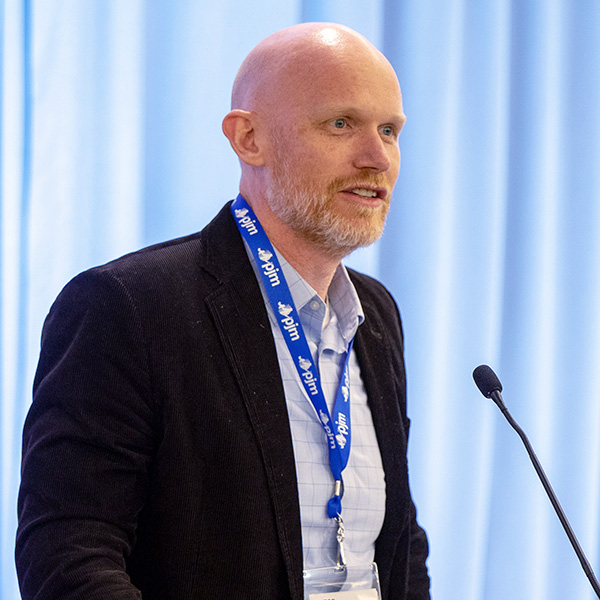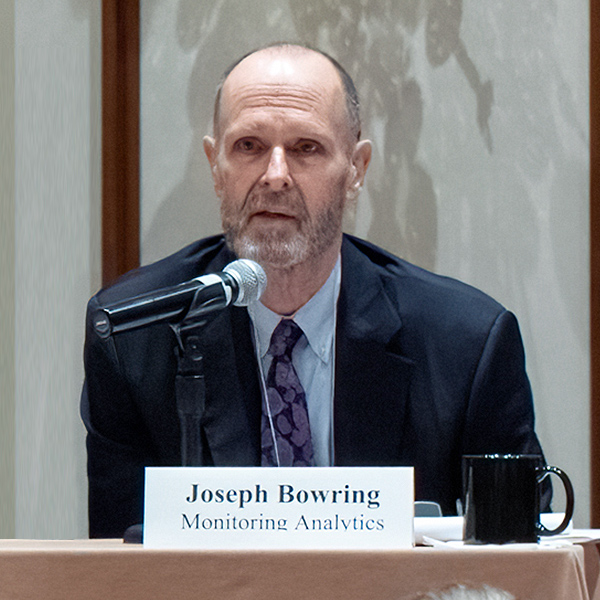In the sometimes sleepy world of utility ratemaking, Connecticut is frequently making headlines over public disputes between the state’s utilities and their regulators.
The feud reached a boiling point in May when Eversource Energy announced plans to reduce its investments in the state by $500 million over the next five years. (See Eversource Announces $500M Cut in Connecticut Investments.)
Eversource and Avangrid — which own the major investor-owned utilities in the state — have decried actions taken by Public Utilities Regulatory Authority (PURA) Chair Marissa Gillett, arguing the agency’s approach to several recent rate cases jeopardizes the utilities’ ability to receive a fair return on their investments.
Meanwhile, Gillett has made the case that the agency is simply holding the utilities accountable to existing standards, albeit more strictly than in the past.
The dispute comes at a critical time for the state’s power grid, which is facing a significant expansion to accommodate electrification and increasing volumes of renewable generation. It also comes as Connecticut undertakes a major shift — at the behest of the state legislature — to how it regulates electric utilities.
While New England has experienced a broader trend towards stronger utility performance incentives in recent years, Connecticut is the first state in the region to undertake a full-scale shift to performance-based regulation (PBR).
Ultimately, the success of Connecticut’s transition to PBR could have significant implications for the state’s clean energy transition, the cost and reliability of its electricity, and the proliferation of PBR approaches throughout the broader region.
Misaligned Incentives
In the traditional cost-of-service model, regulators determine utility revenues based on operational expenses, capital investments and an allowed rate of return on investments. While efforts to reform traditional ratemaking predate the clean energy transition, there has been a growing recognition that changes to the basic cost-of-service model are needed to accommodate the changes that are underway.
PBR encompasses a wide range of regulatory approaches including financial incentives and penalties, performance metrics and scorecards, multi-year rate plans, and revenue decoupling, all aimed at achieving goals and outcomes not explicitly considered in traditional ratemaking.
“Under cost-of-service regulation, we see a real tension between the kinds of investments that earn utilities an allowed rate of return and those they pass on to customers as operating expenses,” Oliver Tully, director of utility innovation at the Acadia Center, told RTO Insider. “We see a situation where the high capital-cost investments may not be the ones that are actually best for ratepayers and the grid overall.”
Traditional regulation, Tully said, can lead to “a clear misalignment between the incentives that the utilities face when making investment decisions and the policy priorities that the states have, especially around clean energy, equity, greenhouse gas emissions and affordability.”
Some of the top regulators in New England have also highlighted this dynamic. At a conference in June, Chair Jamie Van Nostrand of the Massachusetts Department of Public Utilities brought up the “cap-ex bias” of investor-owned utilities. (See State Regulators Discuss Affordability, Utility Incentives at NEECE.)
“Utilities tend to want to build more stuff because they get to put it into the rate base and get a return on it,” Van Nostrand said, adding that regulators should consider “incentive mechanisms to align [the utilities’] interests with our interests in pursuing clean energy goals and maintaining affordability.”
This sentiment was echoed by Philip Bartlett, chair of the Maine Public Utilities Commission, who said “we definitely need to move [toward] stronger performance incentives that are really driving outcomes.”
In the coming years, the states with strong decarbonization goals will rely on utilities to help implement demand reduction programs, utilize new technologies to optimize the existing grid and facilitate the deployment of an increasing amount of distributed generation. For advocates of PBR, incentives beyond the cost-of-service model are necessary.
But in Connecticut, which has pushed to implement the most aggressive PBR framework in the region, the development process has served as another stage for clashes between the utilities and PURA.
Shifting Winds in Connecticut
In the late evening of Aug. 3, 2020, Hurricane Isaias made landfall in North Carolina, weakened to a tropical storm, and accelerated inland roughly 100 miles parallel to the coast up through Vermont, eventually dissipating in Québec. The storm left immense destruction in its wake, causing 10 deaths and almost $3.5 billion of damage in the Northeastern U.S.
In Connecticut, Isaias triggered lengthy power outages and, several years later, major new legislation to address concerns about what many lawmakers saw as poor utility performance in response to the storm. Passed in 2023, the state legislature’s Take Back Our Grid Act directed PURA to create a performance-based framework for regulating the state’s electric utilities.
This PBR framework is still in development, with opinions on the current structure varying widely depending on who is asked.
According to the state’s utilities, PURA has largely ignored their concerns, resulting in a proposal that would prevent the utilities from making a reasonable rate of return, and ultimately reduce investments in the state’s grid.
“There’s no transparency as far as I can see into how PURA’s formulating it’s vision of what PBR is,” said Doug Horton, vice president of rates at Eversource, calling for more “collaboration and coordination” in the PBR development process.
“We don’t expect to get everything that we want, but we expect to be heard, and in Connecticut that’s just not been the case,” Horton said.
Representatives from Avangrid echoed Eversource’s concerns about PURA’s approach, arguing that the agency needs to better incorporate the perspectives of the utilities, investors, commercial and industrial end users, and local governments.
But according to organizations representing environmental and consumer advocates, the proceedings have been collaborative, and PURA has been intentional about including a wider range of perspectives than have historically been involved in utility proceedings.
“There has been a great deal of resistance from the electric distribution companies,” said Shannon Laun, vice president at the Conservation Law Foundation. “I think it is troubling that they’ve really been personally attacking the regulators at PURA and have made some pretty outrageous claims that the process has not been collaborative and has not taken into account their perspective.”
Laun emphasized that PURA “really has gone above and beyond to make this a collaborative process.”
Responding to Laun’s contention, an Eversource representative said the company has “never personally attacked PURA or the chair.”
Connecticut Consumer Counsel Claire Coleman said the PBR proceedings have been “a thoughtful process” featuring “a broad range of stakeholders,” while stressing that there is a still lot of work left to do.
PURA issued a ruling on the first phase of the PBR proceedings in April 2023, setting out the “regulatory goals, foundational considerations and priority outcomes to guide PBR development.” It also established three dockets for the second phase of the proceedings, centered around revenue adjustment mechanisms, performance mechanisms and integrated distribution system planning.
PURA is now holding technical sessions for each of the three ongoing PBR dockets, with final decisions on the dockets on track for mid- to late 2025.
The utilities’ concerns about the PBR framework — and the general regulatory environment in the state — ultimately boil down to the rate of return they expect to receive on their investments. Several recent high-profile rate cases have spurred outcry from the utilities about their ability to attract investors, and credit rating agencies have downgraded the outlooks for Connecticut utilities in recent years.
According to Horton, the proposed framework appears to “arbitrarily set rates less than our costs … and that on its own will cause PBR to fail.”
He added that the framework would only push investors away, which would disincentivize the utilities from spending money in the state.
Javier Bucobo, vice president of regulatory affairs at Avangrid, said the current structure would account for inflation on a delayed timeline, and contains performance metrics that appear unattainable.
“It’s setting up the utility to fail,” Bucobo said. “That’s the exact opposite of what PBR is for.”
In contrast, Coleman, along with environmental advocates involved in the proceedings, has a less catastrophic view of the credit downgrades and the PBR proposals.
Regarding the credit downgrades stemming from recent rate cases, “we acknowledge that there is an impact, but it is almost a tertiary impact to consumers,” Coleman said.
While cost-of-debt increases could ultimately result in some higher costs for ratepayers, utility rate increases are “a much more immediate cost to customers,” she added.
“What we’ve said is PURA needs to focus on the legal standard, which is: are the utilities receiving what is sufficient-but-no-more-than-sufficient to keep their business going,” Coleman said. “That really is the correct analysis, as opposed to speculating about how the investment community is going to react.”
Ultimately, Coleman expressed her hope that the new PBR framework will eventually help the utilities’ credit ratings by increasing the certainty around how the utilities can recover their costs, while also meeting the state’s performance goals.
Despite the utilities’ vocal concerns, Bucobo and Horton agreed that it is not too late to develop a PBR framework that can work for everybody.
“It can be turned around,” said Bucobo. “It’s as easy as having a conversation, and we’re willing to do that.”
‘A Model for Other States to Follow’
In New England, PBR at some level already exists in “basically every state,” said Mark Lowry, president of Pacific Economics Group and a leading expert on PBR. “New England was one of the very first to have these multiyear rate plans, and now almost every state is going to have it — that’s pretty amazing.”
Across the U.S, Hawaii is the furthest state along in implementing a comprehensive performance-based framework similar to Connecticut’s ongoing proceeding.
Lowry said Connecticut “was drawn to this very outwardly consumer-friendly PBR approach in Hawaii but didn’t even have the utility protections that there are in Hawaii, much less the ones that are commonplace elsewhere in New England.”
At the same time, Lowry said that the state appears to be reconsidering some of its approach to PBR, adding that “certainly some of [Chair Gillett’s] instincts are correct to second-guess some of what the utilities are saying … maybe Connecticut regulation has been kind of stodgy in the past and needed some fresh air.”
While Connecticut has opted to dive headfirst into PBR, other New England states have taken a much more incremental approach to adopting utility performance mechanisms, said Nathan Phelps of Vote Solar.
“There’s been little policy tweaks here and there in order to move towards what I would consider PBR,” Phelps said.
In Maine, a recent legislative PBR proposal died in the House of Representatives, with opponents citing the controversy that has surrounded implementation in Connecticut.
Some advocates have expressed concern that the pushback to Connecticut’s proceeding could discourage other states from considering the pursuit of comprehensive PBR.
Acadia’s Tully said that, while he views the Connecticut proceeding as “a model for other states to follow,” he has been disappointed by the utilities’ response and is “a little bit fearful of what this could mean for other states.”
In New Hampshire, Eversource included a PBR proposal in a rate case it filed in May. New Hampshire Consumer Advocate Don Kreis called the proposal “a reasonable basis to begin discussions with the utility about what a fair and reasonable performance-based ratemaking initiative would look like.”
But regarding the struggles in Connecticut, Kreis said he would “resist any attempt to try to turn New Hampshire into the anti-Connecticut,” and said it is a “key imperative” for PBR to have a balance of rewards and consequences.
“The utility has to put skin in the game,” Kreis said.

